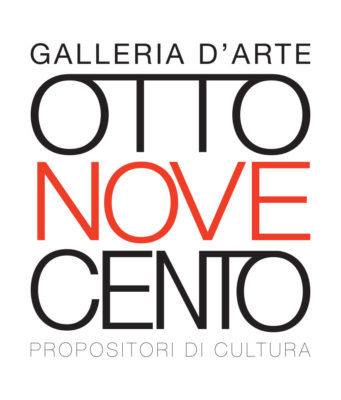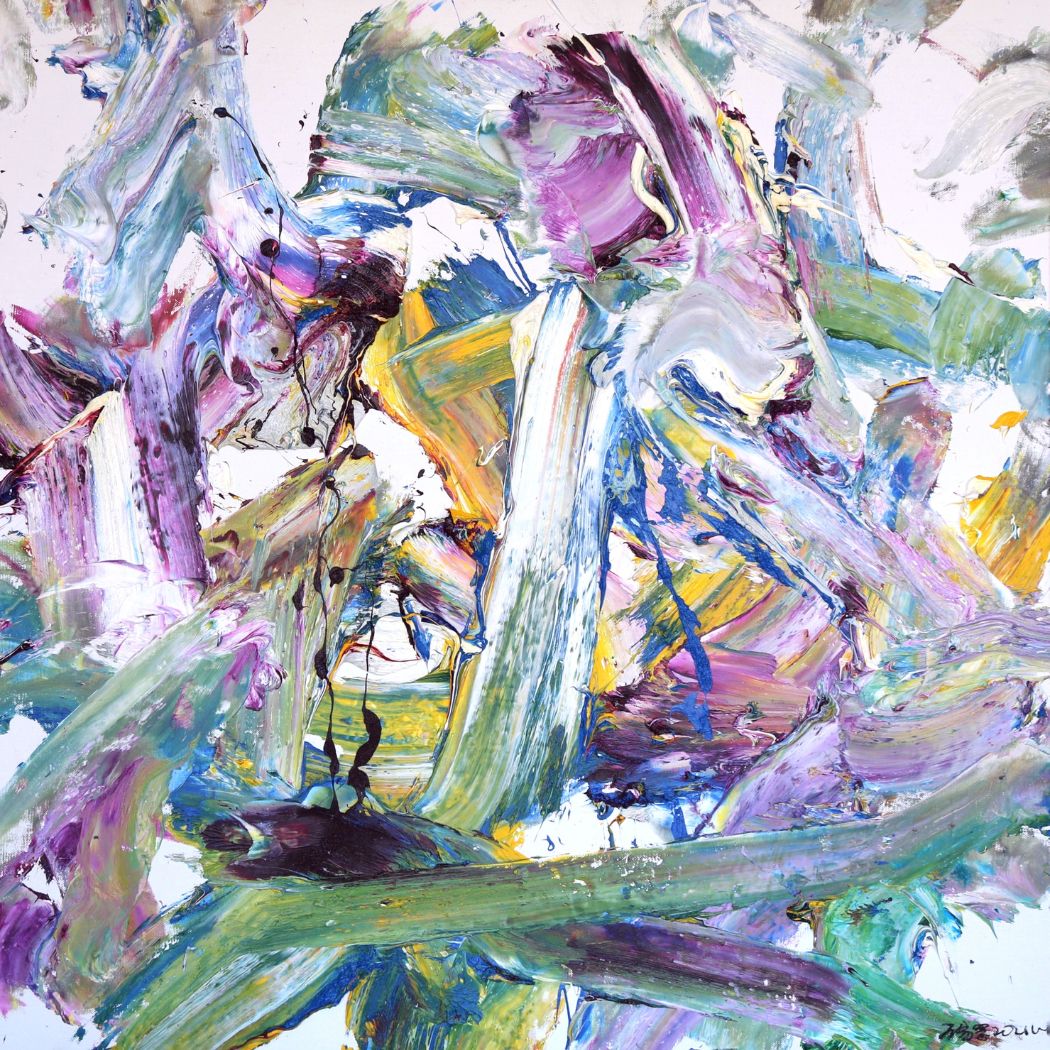Wang Yigang nasce nel 1961 nella provincia di Heilongjiang, in Cina. Si forma artisticamente presso la Luxun Academy of Fine Arts di Senhyang, laureandosi in pittura nel 1986. Durante il periodo accademico risente molto dell’influenza di cubismo e futurismo, che rielabora sin dall’inizio in modo molto personale, virando verso l’arte astratta. Se nella primissima produzione degli anni ’90 mantiene tale distanza rispetto al linguaggio figurativo, il cui aspetto descrittivo considera superfluo alla missione artistica, nel periodo successivo trae ispirazione dalla vita reale, da oggetti quali poster, pubblicità e da argomenti politici, da cui nascono dipinti collage dai connotati pop. Nella fase più recente prevale la narrazione astratta informale, con composizioni che, costruite attraverso una forte predominanza del dato gestuale lasciando spazio ai soli colore e materia, veicolano suggestioni di matrice tradizionale orientale. Questa ricerca, basata sul primato dell’atto creativo e dell’idea sul risultato pittorico, a favore dell’evocazione di simboli e concetti, ha valso a quella di Yigang la definizione di “concept abstract art”. La tradizionale “pittura d’azione”, nell’ambito dell’espressionismo astratto, in questo senso, è evidente riferimento storico-artistico. Quella che l’artista compie è una vera e propria danza sulla tela e con la materia pittorica, che talvolta si fa colore puro, in gradevolissime combinazioni, talaltra scultura, quando il suo accumulo la fa sporgere dalla superficie. Si tratta di uno sfondamento spaziale in più di una direzione: quello degli addensamenti di colore, che sembrano sollecitare nell’osservatore quella infantile (se non ancestrale) propensione alla manipolazione della materia (pittorica); e quello della furia cromatica che non ha paura di sfidare i limiti convenzionali della tela, servendosi dello spazio bianco a proprio piacimento. Un fare e un farsi di una pittura che è guidato apparentemente dal solo caos, ma il cui esito, frutto di un concepimento (in)formale che predilige l’armonia strutturale e cromatica filtrata dagli intenti mentali e dagli istinti fisici dell’autore, è colto come immediato totale armonico da chi osserva.
Wang Yigang was born in 1961 in Heilongjiang Province, China. He received his artistic training at the Luxun Academy of Fine Arts in Senhyang, graduating in painting in 1986. During his academic period, he was greatly influenced by Cubism and Futurism, which he re-elaborated from the beginning in a very personal way, turning towards abstract art. In the very early production of the 1990s he maintained this distance from figurative language, whose descriptive aspect he considered superfluous to his artistic mission, whereas in the later period he drew inspiration from real life, from objects such as posters, advertisements and from political subjects, from which he created collage paintings with pop features. In the more recent phase, however, the informal abstract narrative prevails, with compositions that, built through a strong predominance of gesturality leaving space for colour and matter alone, convey suggestions of a traditional Oriental matrix.
This research, based on the primacy of the creative act and the idea over the pictorial result, in favour of the evocation of symbols and concepts, has earned Yigang’s work the definition of “concept abstract art”. The traditional ‘action painting’ within abstract expressionism, in this sense, is an obvious art-historical reference. What the artist performs is a veritable dance on the canvas and with the paint material, which sometimes becomes pure colour, in very pleasant combinations, and sometimes sculpture, when its accumulation makes it protrude from the surface. It is a spatial breakthrough in more than one direction: that of the thickenings of colour, which seem to stimulate in the observer that childish (if not ancestral) tendency to manipulate (pictorial) matter; and that of the chromatic fury that is not afraid to challenge the conventional limits of the canvas, using the white space at will. A making and a becoming of a painting that is apparently guided by chaos alone, but whose outcome, the product of a (in)formal conception that prefers structural and chromatic harmony filtered through the author’s mental intentions and physical instincts, is grasped as an immediate harmonic total by the observer.

